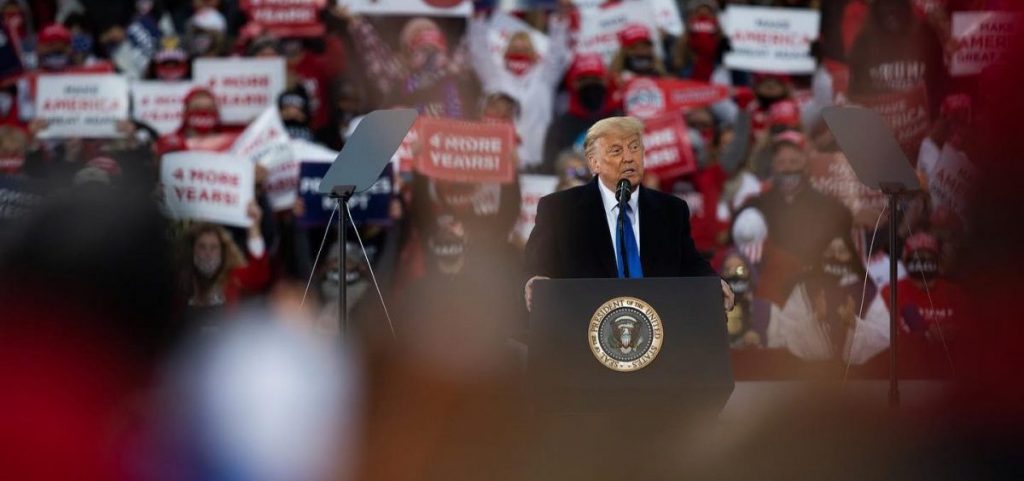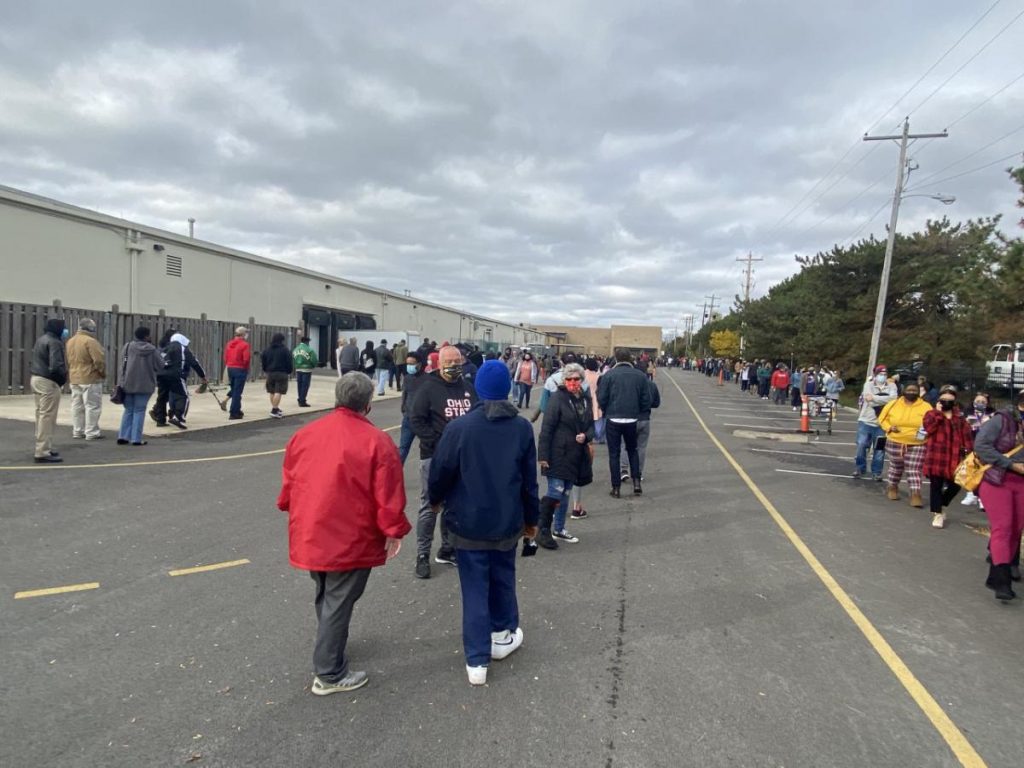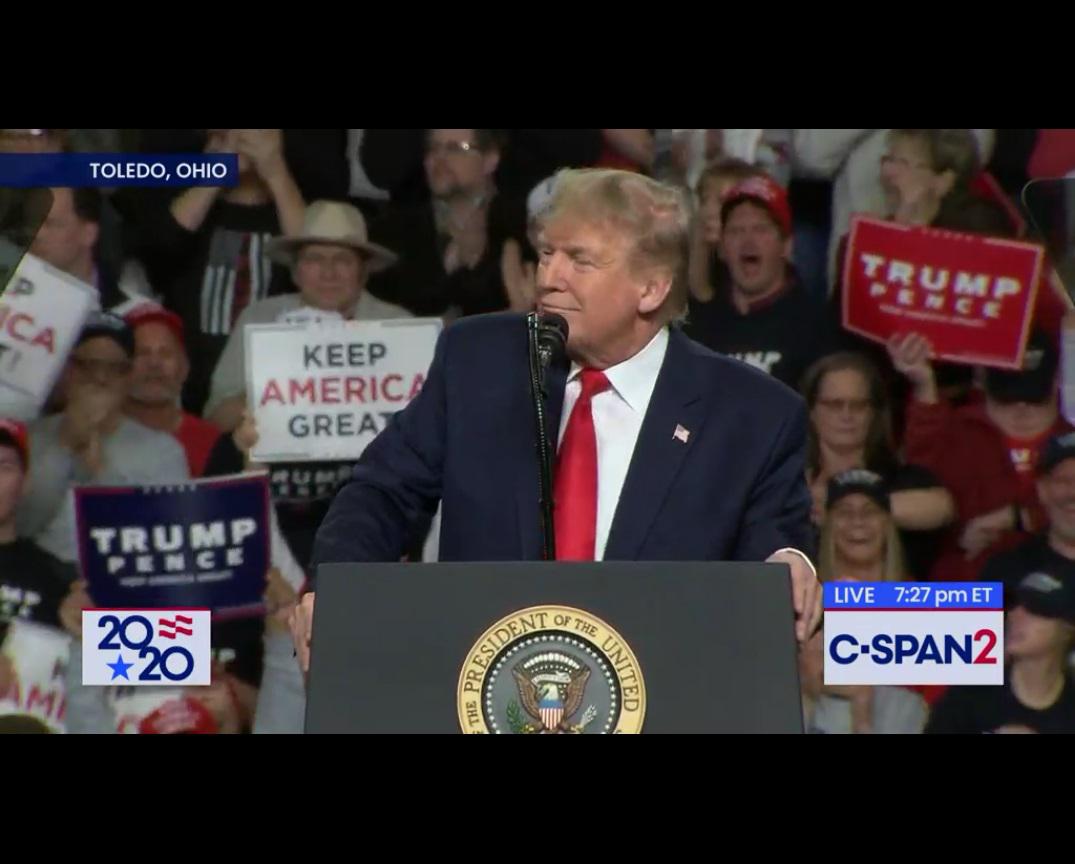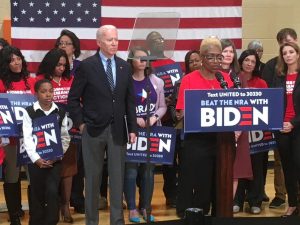News
2020 Year In Review – Ohio Presidential Election Broke Record, Tradition
By: Karen Kasler | Statehouse News Bureau
Posted on:
COLUMBUS, Ohio (WOUB) — A year ago, 2020 looked like it was going to be another busy election year in Ohio. But with the pandemic crowding out most other news and keeping candidates off the campaign trail, the presidential election took several unexpected turns.
At the start of 2020, it looked like it was going to be a typical election year in Ohio, with Republicans hoping to see their candidate re-elected on a message of economic strength and Democrats focusing on President Trump’s impeachment trial and other criticism against him.
The Democratic field was focused on early primary states. But after most candidates dropped out in early March, and the pandemic was just starting to gain ground, Bernie Sanders came to Ohio, as did Joe Biden.
Hours before the polls were to open on St. Patrick’s Day for the primary, there was a legal scramble by Gov. Mike DeWine and Secretary of State Frank LaRose to close them because of the pandemic.
Hours before the polls were to open on St. Patrick’s Day, there was a legal scramble by Gov. Mike DeWine and Secretary of State Frank LaRose to close them because of the pandemic. That resulted in conflicting reporting by boards of elections and questions for poll workers like Jim McKee.
“The fact that it was so immediate was very confusing too – the judge ruled and less than two minutes later, the board of elections was saying the opposite of what he had just ruled. So I wasn’t sure, should I set my alarm clock for 4am?” McKee wondered. (When McKee woke up at 4, he found out the primary was off and he went to his regular job.)
For the first time ever, the election was moved to a mail-in-only vote with the deadline extended to April 28.
By this time DeWine was battling some fellow Republicans over the pandemic, and was repeatedly asked about Trump’s dismissal of masks and criticism of COVID restrictions – including before he met Trump between a pair of rallies in Toledo and near Dayton in September.
“This is a tough time. We have some people who are unemployed. We have people who, you know, don’t want to wear a mask and, you know, a lot of different things. So I’m going to continue to focus on what I need to do. I think that’s my job. I think it’s what people elected me to do,” DeWine said.
DeWine also declined to criticize Trump when asked about Trump’s comments suggesting people could vote by mail and in person to “test the system” – though DeWine said that would be illegal.
As Trump held those rallies, and counties that hosted them saw COVID case increases, there were Republicans who were frustrated.

Cleveland hosted the first presidential debate in September, and afterward Biden, who hadn’t been campaigning much in person, began a whistle-stop tour of several states starting in Alliance.
The lack of masks on the Trump site of the debate was noted by many. A few days after the debate several people, including Trump, tested positive for COVID. After a weekend hospital stay, Trump started rallies again, including one in Circleville. He also discouraged early voting by mail, which Ohioans have done since 2006 – while flyers went out to Republican voters promoting voting early for Trump.
Polls through the fall showed Biden with a lead in Ohio, and as early voting began in October, Democratic affiliated voters flooded boards of elections with absentee ballot requests. But Republican pollster Neil Newhouse said GOP voters were motivated too, even before big events like the death of Supreme Court Justice Ruth Bader Ginsburg.
My weekend traveling Ohio, in pictures pic.twitter.com/TXt1gNPUXA
— Karen Kasler (@karenkasler) October 12, 2020
“I think the intensity in this election was already a 12 on the 1-to-10 scale. And this just ratchets it up to, like, 15,” Newhouse said. “It’s hard to see how people could get any more focused in this election.”
Both parties worked to mobilize their voters. Women, especially in the suburbs, were expected to be key. But there were questions about whether Trump had maxed out turnout in rural areas, and Democrats were watching voters of color and those in urban areas.
Turnout bore out that analysis. Ohio had a near record of registered voters. Lines were long at early voting sites, especially on the weekends. Early voting numbers hit a historic high, and an all-time record of nearly 6 million Ohioans cast ballots.

Trump easily won Ohio by 475,000 votes, though it was about the same margin he won Ohio in 2016. But this year was a little different, as noted by Republican strategist Mark Weaver.
“The big surprise is that pieces of eastern Ohio that used to be Democrat, reliably so are now turning Republican, Mahoning County perhaps being the most prominent of those,” Weaver said.
That was one of the counties experts suggested were worth watching. Mahoning and Lorain Counties both switched to red after being close in 2016. But Montgomery County, which voted Republican for president in 2016 for the first time since 1988, flipped to blue.
But this marked the first election since 1960 in which a Republican won Ohio but lost the White House.
Republicans in Ohio also netted three seats in the state House and one in the Senate.
While Democrats won one of two Ohio Supreme Court races, they also lost their party chairman David Pepper, who resigned, saying the party needs new leadership. No new chair has been named yet.



